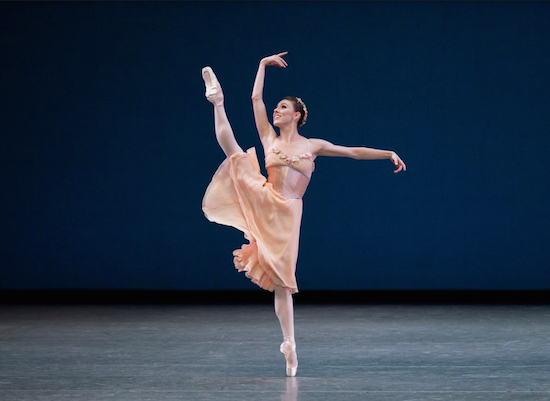Eagle Q&A: New York City Ballet principal dancer Tiler Peck

Before beginning the biographical and question and answer portion of my interview with New York City Ballet’s superb and sublime principal dancer Tiler Peck, let’s get any Abbott & Costello “who’s on first” confusion out of the way. To use biblical language, Tyler Angle did not beget Tiler Peck, nor did Justin Peck beget Jared Angle. The Angles and one Peck (Tiler) — a bushel and a peck? — are principal dancers with New York City Ballet (NYCB.) Justin Peck is a soloist and choreographer with NYCB. (Don’t even ask about principal dancer Robert Fairchild, who is Tiler Peck’s husband or principal dancer Megan Fairchild, who is Robert’s sister.)
If at times it seems like the names of the entire company, from corps de ballet to soloist to principal, were thought up by Edward Lear or Tom Stoppard just to confuse you, well, you might be right. There are so many colorful, distinctive names. Suffice it to say, the subject of this profile-interview is Tiler with an “i,” as in “incandescent.”
Tiler Peck is a Southern California girl, with a Pepsodent smile, a sweet, coquettish voice and a cheerleader’s enthusiasm. She began studying dance at the age of 2, in Hollywood, with the former Bolshoi Ballet principal Alla Khaniashvili. By 11, she was studying with former NYCB dancers Colleen and Patricia Neary at Conjunctive Point in Culver City. At the age of 12, she moved to New York and entered the School of American Ballet, the official school of the NYCB for most of the 2000-2001 Winter Term. Somehow, before she formally began SAB she also found time to act in “Donnie Darko,” Richard Kelly’s cult classic with another brother-sister team: Jake & Maggie Gyllenhaal and a plethora of young actors about to step into larger roles: Seth Rogen, Jena Malone, Noah Wylie and Drew Barrymore. Peck was also about to step into a larger role, although on a much different, more rarefied stage.

Brooklyn Boro
View MoreNew York City’s most populous borough, Brooklyn, is home to nearly 2.6 million residents. If Brooklyn were an independent city it would be the fourth largest city in the United States. While Brooklyn has become the epitome of ‘cool and hip’ in recent years, for those that were born here, raised families here and improved communities over the years, Brooklyn has never been ‘uncool’.